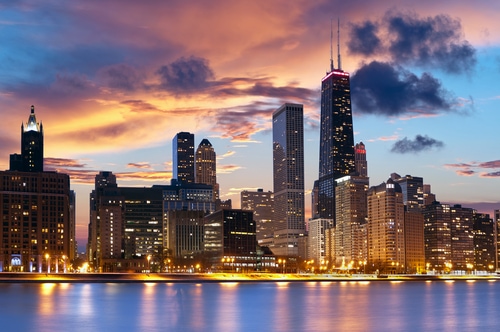New York has the Empire State Building; Dubai the Burj Khalifa; China the glittering Shanghai Tower. But long before these skyscrapers, edifices to human ingenuity and hubris, scratched the atmosphere, there was Chicago and the Home Insurance Building.
Its name may not stir the soul or make a heartbeat skip, but the Home Insurance Building was gorgeous in every respect. It was a technological marvel of steel, imagination, and stone when workers finished building it in 1885. At 138 feet, the structure was tiny compared to today’s goliaths, but it has one notable distinction that the others can never hope to claim — the world’s first skyscraper.
Today, we take skyscrapers for granted. They are modern mountains made of metal, glass, and sweat. Some are architecturally gorgeous, while others look like a 4-year-old put them together with blocks. Still, if you were to fly across Lake Michigan to Chicago, you would see one of the most glittering urban areas in the world.
Chicago’s skyline formed comparatively quickly, at least by any historical measure. Read on to learn the top 5 tallest buildings in Chicago.
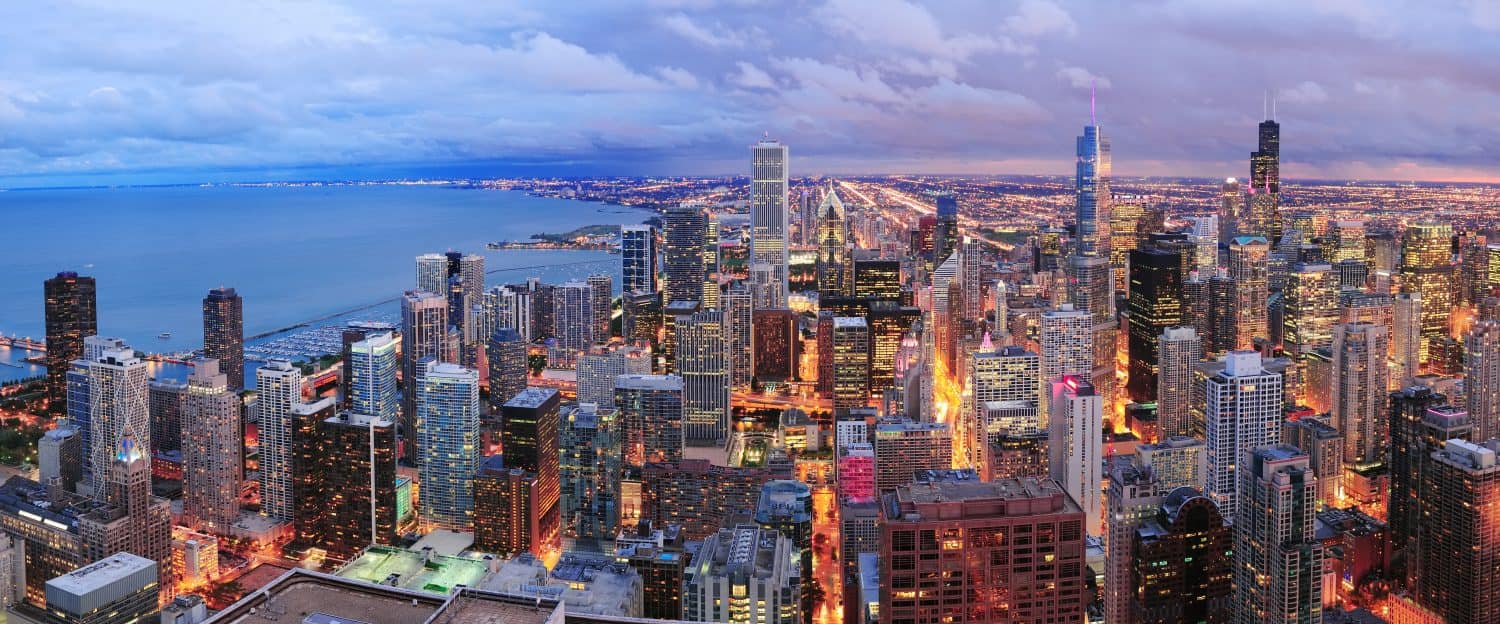
Chicago shines as dusk approaches.
©Songquan Deng/Shutterstock.com
The Growth of the Windy City
Call Chicago what you want… City of Big Shoulders… Second City… The Windy City… The White City… Paris of the Prairie, or even that toddlin’ town. Chicago was, and is, an iconic metropolitan center that the Cubs, the Sox, the Bears, Al Capone, the stockyards, and deep-dish pizza call, or called, home.
It wasn’t always so. Indigenous groups, such as the Winnebago and Missouria, among others, were the first to live in the region. That was until Jean Baptiste Point du Sable arrived in 1780 from what is today Haiti. His father was a sailor from France, and his mother was an enslaved African woman. Sable, along with his Indigenous wife, sailed from New Orleans up the Mississippi River, eventually building a house along what would become the Chicago River.
In 1803, the U.S. Army constructed Fort Dearborn on what is now the intersection of Wacker Drive and Michigan Avenue. The area soon became an important trading hub as the nation expanded. Its location between the Mississippi and the Great Lakes allowed Chicago to build and thrive. In 1837, it became an incorporated city.

Chicago is famous for its deep-dish pizza.
©Supitcha McAdam/Shutterstock.com
Railroads
The town grew, and by the 1880s, Chicago had become the second largest city in the United States — hence the moniker Second City — with a population exceeding 1 million. Only New York City was bigger. Chicago’s rapid expansion was due, in part, to the railroads.
As America expanded from one end to the other, it was pushed along, first by local rail lines, then by the Transcontinental Railroad. Chicago became the terminus through which most traffic flowed. Many railroad companies used Chicago as a hub, not only to transport people but to move the sinew of newly opened western territory — livestock, food crops, and other raw materials — to the great cities of the East.
At first, the railways connected the city to the wheat farms of northern Illinois and southern Wisconsin. The farther west people journeyed, the farther west the railroads expanded. Many railroad magnates knew that America’s future lay beyond the Mississippi and, as such, located their corporate headquarters in the City of Big Shoulders. In time, Chicago became the leading manufacturer of railroad cars and locomotives.
Then disaster struck.
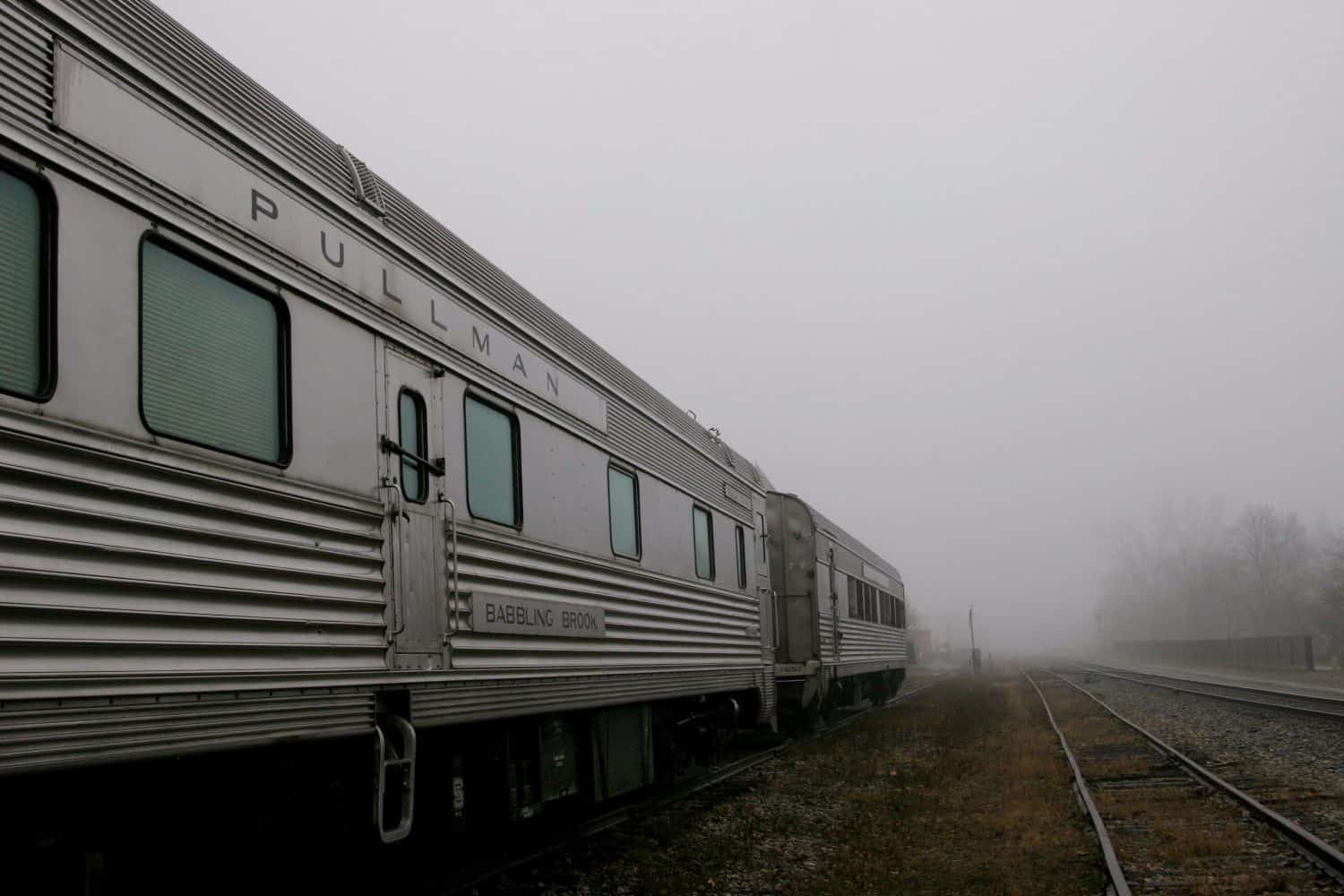
The Pullman Company built its railroad cars in Chicago.
©Steve Pepple/Shutterstock.com
The Great Fire
Before the advent of fire hydrants and modern fire-fighting techniques and equipment, cities across the globe feared fire. They were tinderboxes waiting to explode. One spark could destroy entire neighborhoods or the community itself. Chicago was not immune to such things. On October 8, 1871, one of those sparks ignited, setting off one of the greatest disasters in American history.
Just what exactly sparked the Great Chicago Fire is known only to history. Legend claims it was a cow owned by Mrs. Catherine O’Leary that kicked over a lantern. The fire that ensued burned down much of the city. The claim is dubious at best. Regardless, most of Chicago went up in flames, fueled by wooden buildings, a desperate drought, and high winds. The fire bypassed the city’s all-important railroad yards and factories.
As residents scooped up the ashes, the smoldering city rebuilt itself in record time. Construction boomed, and by 1885, Chicago laid claim to the world’s first skyscraper.
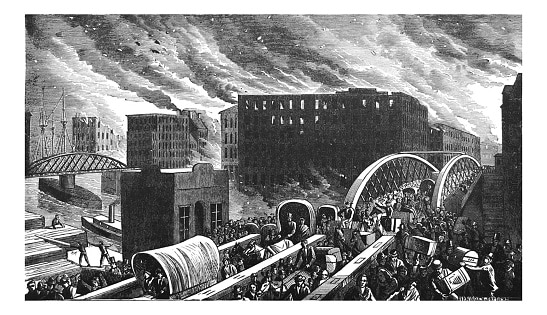
The Great Chicago Fire destroyed much of the city.
©Campwillowlake/iStock via Getty Images
Rising Giant
Learning from the past can often save the future. After the conflagration, architects began to rethink their designs and incorporate iron, stone, and steel into their work. So, when the executives at the Home Insurance Company asked the architect William LeBaron Jenney to design a fireproof building for the firm’s new Chicago headquarters, he thought long and hard.
He designed the building, located at the intersection of Adams and LaSalle streets — smack in the middle of the city’s financial district — with a skeleton of steel columns and horizontal beams. Jenney had forgone the usual heavy masonry walls for support. His ideas and techniques were beyond revolutionary. The new design was not only lighter but could also carry more weight as its stone exterior did not have to support the entire structure. Instead, the façade was merely a protection against the vagaries of Chicago weather.
Workers completed construction in 1885. The Home Insurance Building’s 10 floors rose 180 feet. Other architects saw what Jenney had accomplished and added to their designs other innovations, including elevators and plumbing.

The Home Insurance Company Building in Chicago was the world’s first skyscraper.
The Tallest Buildings of Chicago Today.
As the city grew, so did its skyline. Today, the top 5 tallest buildings in Chicago are beyond mesmerizing. Here they are:
1. Willis Tower
Once known as the Sears Tower, the Willis Tower opened in 1973 and is today, at 1,450 feet (not including the two antennas on top), the 12th tallest building in the world and the third tallest in North America. The Willis stands 110 stories high, with a Skydeck towering 1,353 feet above the pavement. At 225,500 tons, the structure is as weighty as 20 city buses and has enough square footage as 100 football fields plus one more.
Wind causes a lot of stress on a skyscraper, and the Willis Tower is no exception. The average wind speed in Chicago is around 10.5 miles per hour. While the Windy City is indeed windy, it doesn’t even come close to other cities like Boston (12.5 mph) and Honolulu (11.3 mph). The windiest city is Dodge City, KS.
Still, architects had to take the wind into consideration when they built the tower. As a result, they designed the four-sided structure with opposite sides that are equal. They included nine square tubes of steel that hold the building together and allow it to withstand the force of the wind.
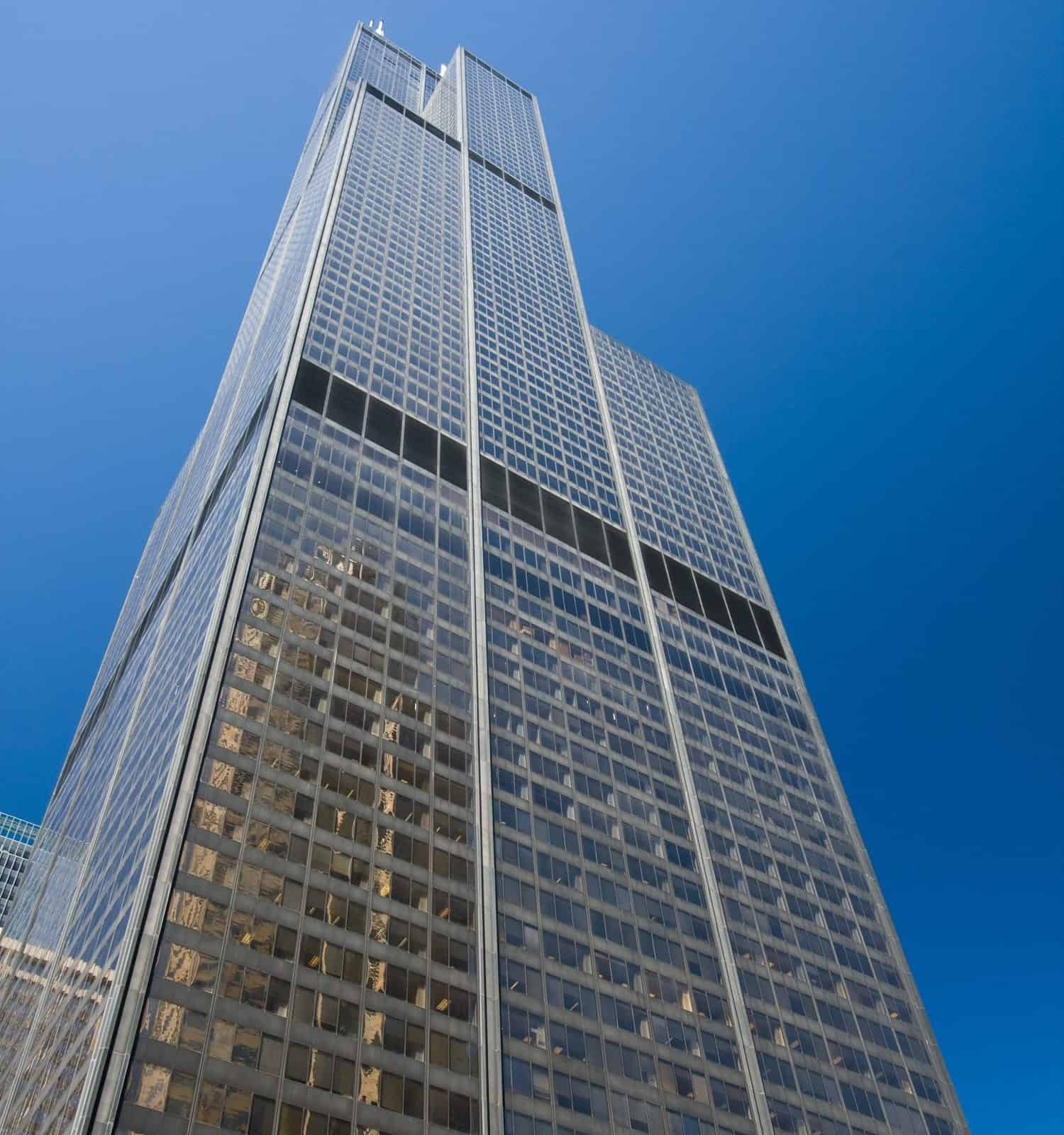
The Willis Tower is the 12th tallest building in the world and the third tallest in North America.
©Dave Newman/Shutterstock.com
2. Trump International Hotel and Tower
Located on North Wabash Ave., this curving building of glass and steel opened in 2009. At 1,388 feet, the tower is the seventh tallest building in the United States and the tallest building to be completed in the 21st century. The tower is located near a bend in the Chicago River.
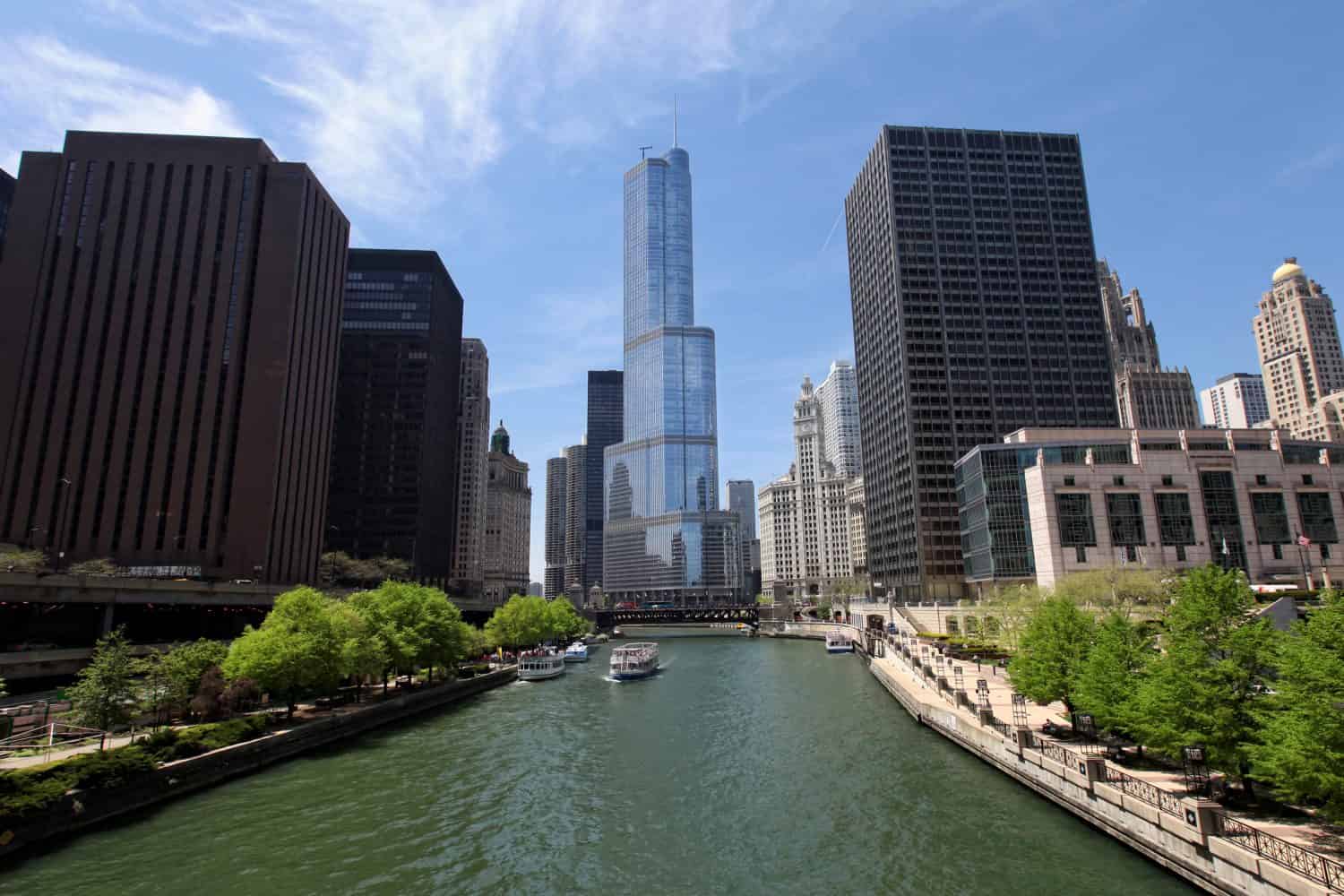
Trump International Hotel rises over the Chicago River.
©Alin Lyre/Shutterstock.com
3. St. Regis
Topping off at just under 1,200 feet, the 101-story St. Regis is the tallest skyscraper designed by a woman architect and the third tallest in the city. Her name is Jeanne Gang. She designed the Aqua next door. The St. Regis is a structure of three interconnected “stems” or towers, each with a different height. Each tower undulates, much like an ocean wave, highlighted by different hues of alternating glass. Having opened in 2020, the St. Regis is Chicago’s newest skyscraper and, for now, the 11th tallest building in the nation.
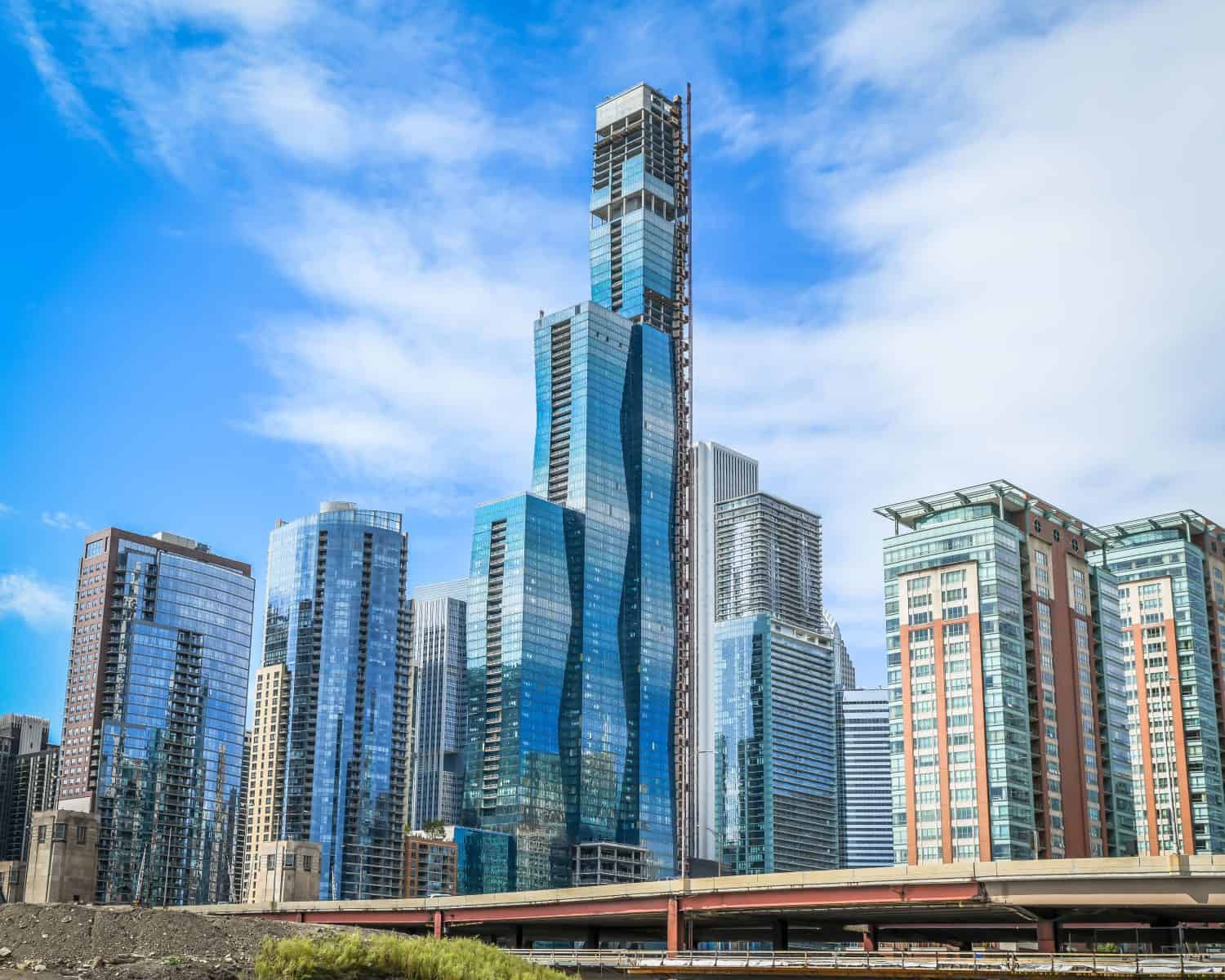
St. Regis is the tallest skyscraper designed by a woman architect and the third tallest in the city.
©Keith J Finks/Shutterstock.com
4. Aon Center
Once the tallest building in Chicago, the Aon Building stretches 1,136 feet above the city. When ground was broken as the Standard Oil Building in 1970, a helicopter hovered over the construction site so gawkers could see how high the building would rise. The Aon Center is shaped like a box with no antennas or adornment on its roof.
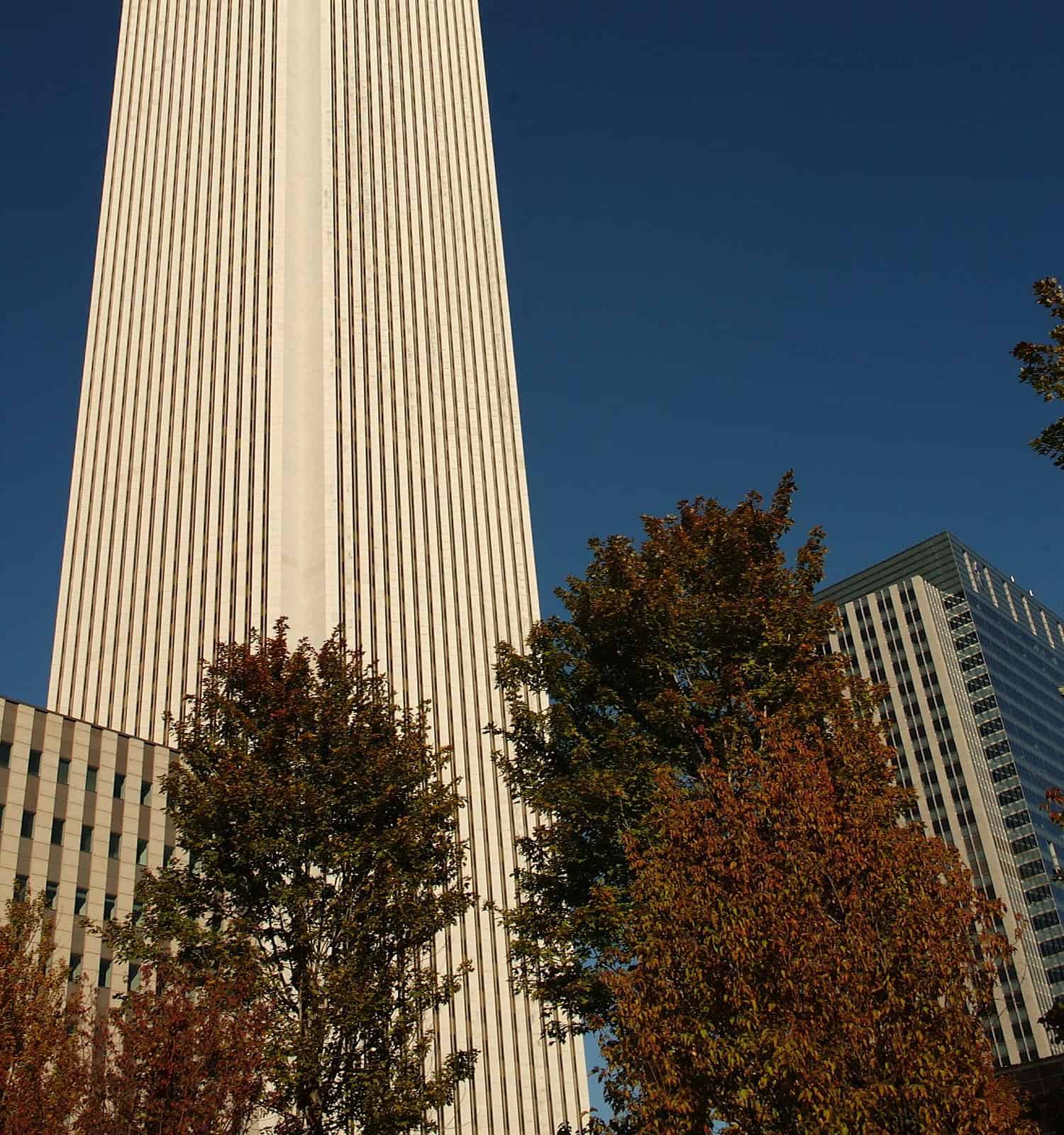
The Aon Center stretches 1,136 feet above the city.
©Keith Levit/Shutterstock.com
5. 875 North Michigan Avenue
Located at 875 North Michigan Avenue, the former Hancock Building sits in the middle of Chicago’s Magnificent Mile district near the North Side. Standing at 1,127 feet, the building is the fifth largest in the city and the 13th tallest in the U.S. When it was completed in 1968, the structure was the second tallest in the world. Only the Empire State Building was taller. The building, with its black façade, is a recognizable landmark. On the 44th floor is a pool, the highest indoor pool in the world.
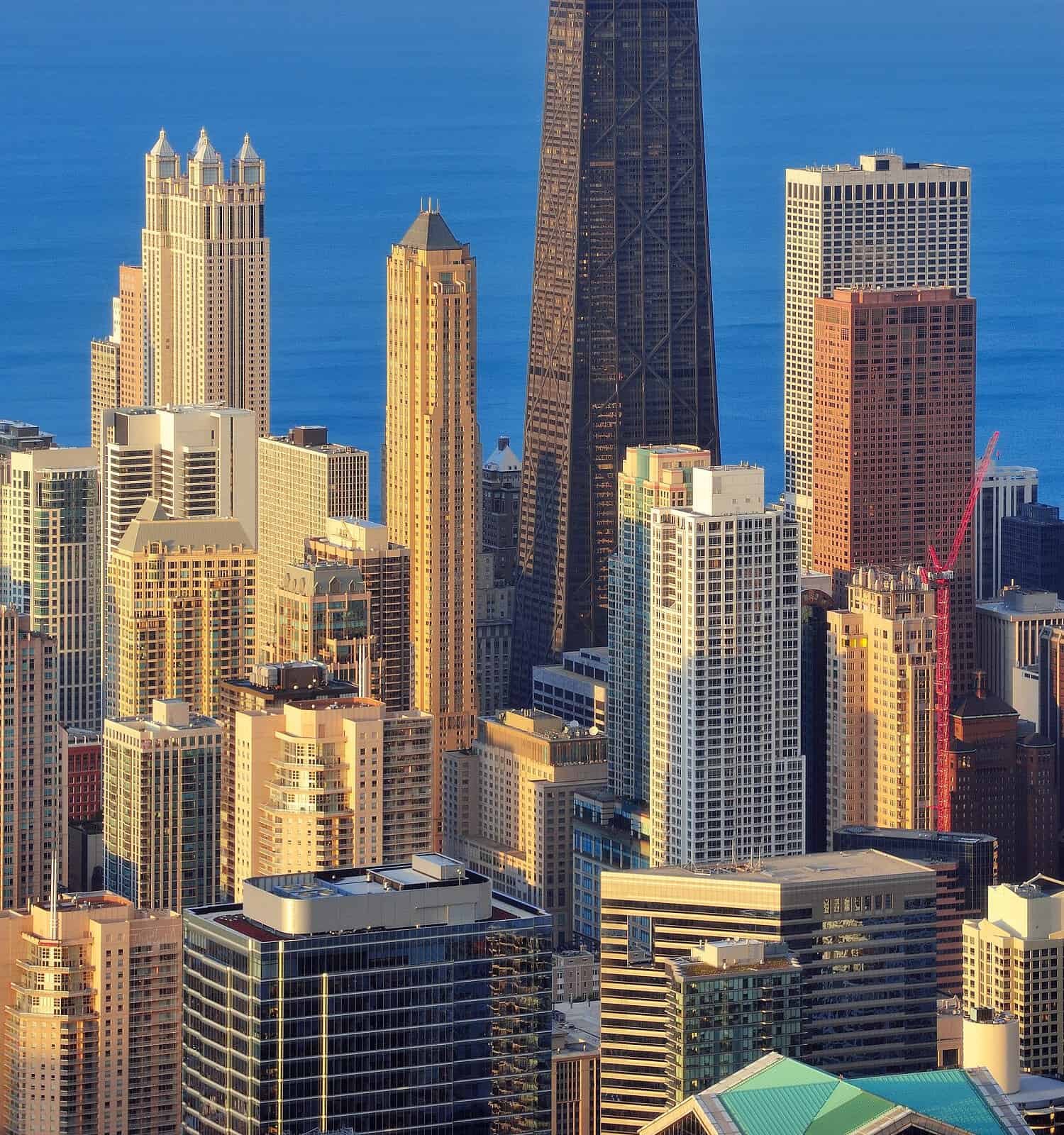
The former Hancock Building looms over Chicago.
©Songquan Deng/Shutterstock.com
Thank you for reading! Have some feedback for us? Contact the AZ Animals editorial team.

